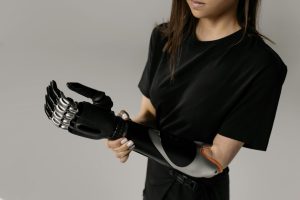How Emerging Technologies Are Redefining Human Capabilities
The world is rapidly evolving, and one of the main catalysts for this change is emerging technologies. These advancements have greatly impacted various industries and have transformed the way we live, work, and interact with each other. But beyond its effects on businesses and societies, one area where emerging technologies have made a significant impact is in redefining human capabilities. In this article, we’ll explore how these technologies are breaking boundaries and pushing us to new heights, redefining what we previously thought was possible.
Opening New Possibilities with Artificial Intelligence
Artificial Intelligence (AI)
Throughout history, humans have strived to create machines that could match and even surpass our cognitive abilities. Today, with the help of AI, we are witnessing this dream becoming a reality. AI is a branch of computer science that deals with the creation of intelligent machines that can perform tasks that typically require human intelligence. By combining machine learning, natural language processing, and other advanced technologies, AI has made groundbreaking advancements in various fields.
Impact on Human Capabilities
With AI, humans are now able to do things that were previously deemed impossible. For instance, AI-powered machines can analyze large volumes of data at lightning-fast speeds, making it easier for humans to detect patterns and make informed decisions. This is particularly useful in areas like healthcare, where AI is being used to diagnose diseases and assist in surgical procedures, ultimately improving patient outcomes. In businesses, AI-powered tools are automating mundane tasks, freeing up time for employees to focus on more critical and creative tasks. In essence, AI is enhancing human capabilities by expanding our reach and empowering us to achieve more in less time.
Enhancing Communication and Collaboration with Virtual Reality
Virtual Reality (VR)
Virtual reality is a technology that creates a simulated environment and immerses the user in a digital world. It is typically achieved through the use of a headset that tracks the user’s head and hand movements, creating a 3D experience. VR has been predominantly used in the gaming industry, but its applications are spreading to other sectors.
Impact on Human Capabilities
One of the greatest strengths of VR is its ability to transport humans to places and experiences that would not be accessible in the physical world. This has opened up new possibilities in communication and collaboration. For example, VR can be used to facilitate virtual meetings, where participants from different parts of the world can interact as if they were in the same room. This has greatly improved communication and collaboration, especially in a remote and geographically dispersed workforce.
Pushing Limits with Wearable Technology
Wearable Technology
Wearable technology refers to devices that are worn on the body and are equipped with sensors and other advanced technology to collect data and perform various functions. These devices include smartwatches, fitness trackers, and even implantable devices like smart insulin pumps.
Impact on Human Capabilities
Wearable technology has made it possible for humans to push their physical limits. For instance, fitness trackers can monitor and track various metrics such as heart rate, steps, and calories burned, helping individuals to optimize their workouts and improve their overall health. In the healthcare industry, wearable devices are being used to monitor patients remotely, allowing for more efficient and timely interventions. Moreover, with the advent of brain-computer interfaces, wearable technology is enabling humans to control devices with their minds, further expanding our capabilities.
Breaking Barriers with Augmented Reality
Augmented Reality (AR)
While virtual reality creates an entirely simulated environment, augmented reality enhances the physical world by overlaying digital information onto it. This technology can be accessed through a smartphone, tablet, or smart glasses.
Impact on Human Capabilities
AR is revolutionizing how we learn, work, and even shop. With AR, humans can interact with digital objects and information in the real world, making it easier to understand and visualize complex concepts. For instance, in the education sector, AR is being used to create immersive learning experiences, bringing textbooks and other learning materials to life. In the workplace, AR is enhancing human capabilities by providing real-time information and guidance, leading to improved efficiency and productivity.
Conclusion
In conclusion, emerging technologies are revolutionizing human capabilities in various ways. From enhancing communication and collaboration to improving physical and cognitive abilities, these technologies are pushing us to new frontiers. As we continue to embrace and incorporate these advancements into our daily lives, it is crucial to ensure ethical and responsible use, to fully harness their potential for the betterment of humanity.











